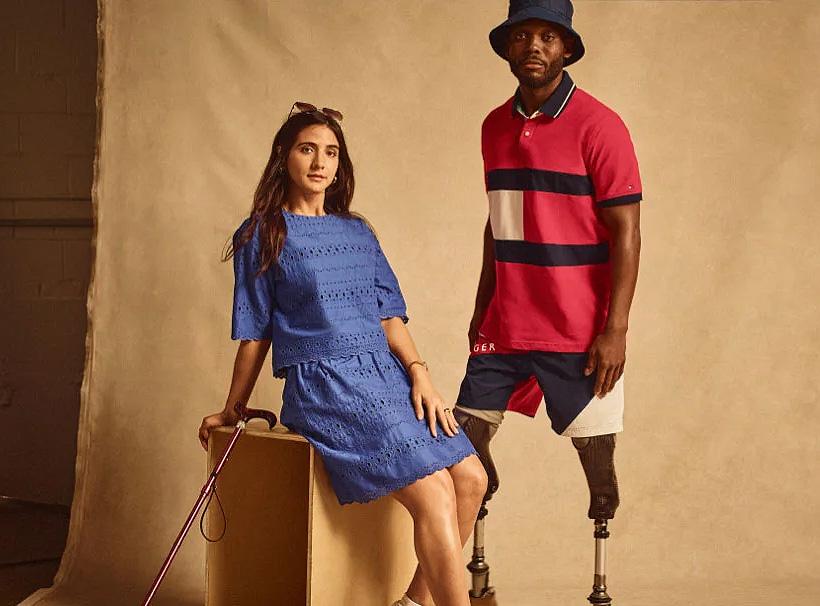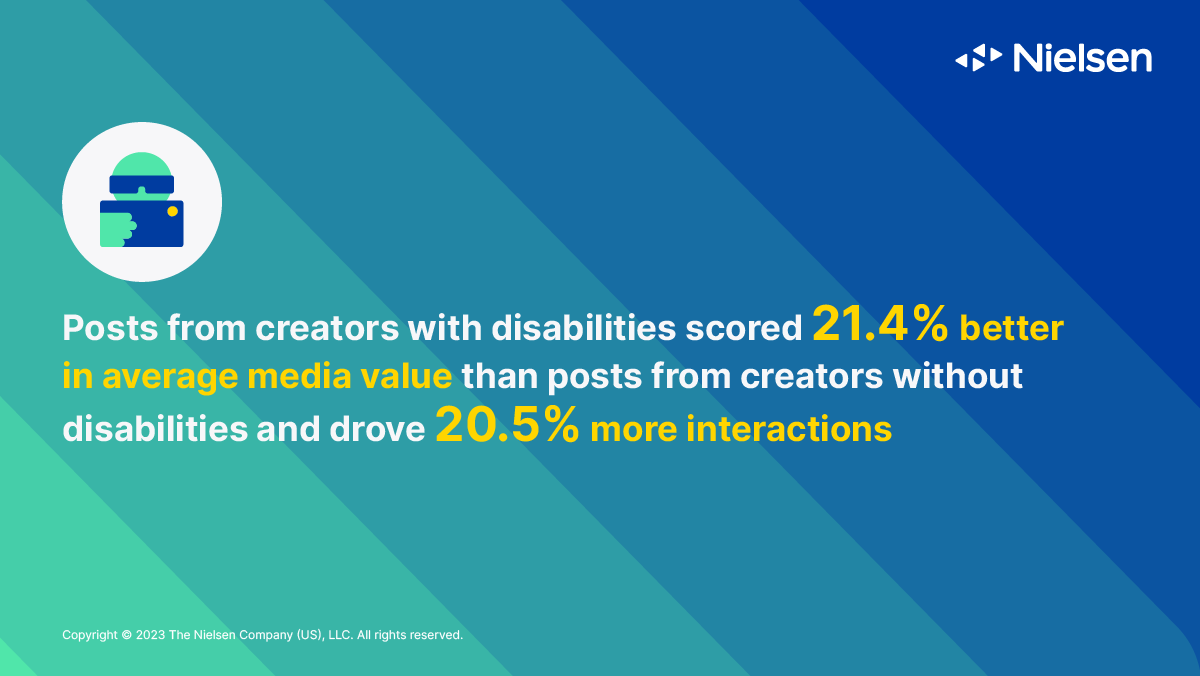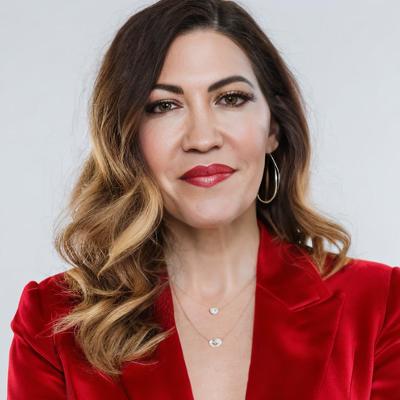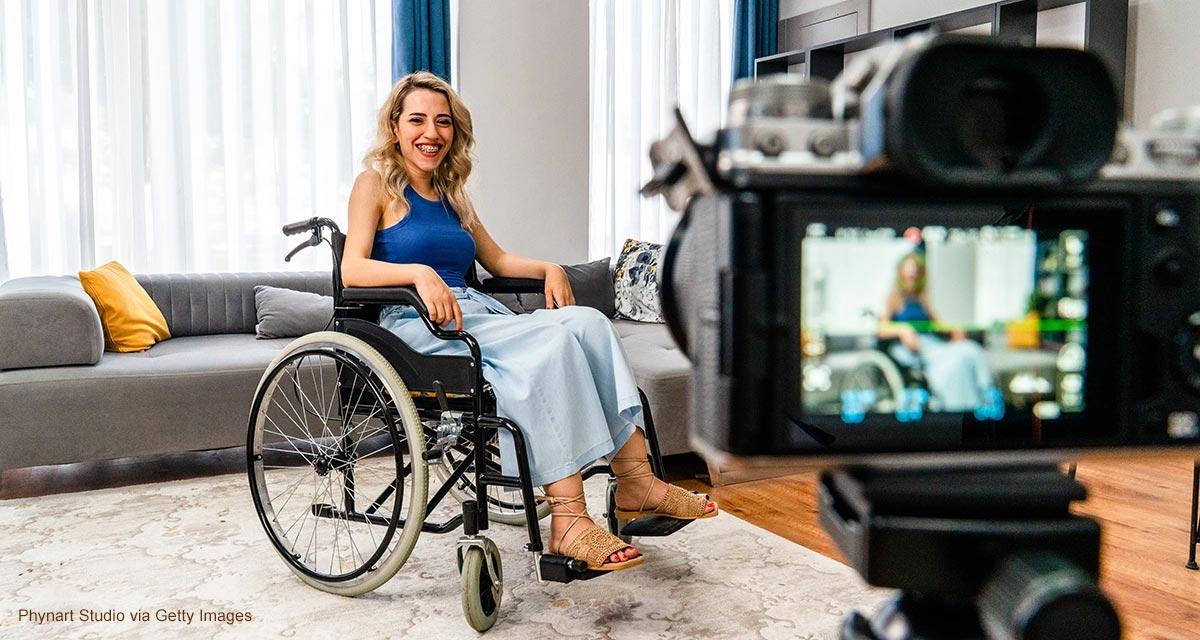Insight From Nielsen: New Research Shows That Disability-Inclusive Content Is Smart Business
Originally published on the Geena Davis Institute on Gender in Media
It’s the classic fashion catalog pose. Two fetching models, a man and a woman who look like they’re about to go yachting, peer into the camera with a look that borders on smoldering.
They are selling clothing, yes. But also a vision of a more representative media landscape.
Look again. To the left of the woman, almost imperceptibly, there’s a cane leaning against her seat. The man, meanwhile, is wearing relaxed-fit shorts that give way to two prosthetic legs.
This is the main photo on the home page for the Tommy Hilfiger Adaptive Collection. It’s part of an innovative campaign that offers an “inclusive style for all,” which in this case highlights fashion for those with disabilities.
The campaign is a smashing success, and it’s hardly an outlier. There’s an unmet hunger for disability-inclusive content, and social media innovators are stepping in to fill the gaps left behind by Hollywood.
In a recent analysis of branded Instagram posts between May 2021 and May 2023, Nielsen InfluenceScope assessed the performance of 24 creators with disabilities to determine their effectiveness and return on investment (ROI) when compared against posts from creators without disabilities.
In aggregate, posts from creators with disabilities scored 21.4 percent better in average media value than posts from creators without disabilities and drove 20.5 percent more interactions.
You can read Nielsen’s complete analysis online.
To further understand why posts from creators with disabilities resonated so strongly with audiences, Spotlight put the questions to Stacie de Armas, who serves as Nielsen’s Senior Vice President, Diverse Consumer Insights & Initiatives, DE&I Practice.
At Nielsen, de Armas leads the research and development of inclusive thought leadership and business initiatives supporting diverse suppliers, content creators, and brands.
Here is our online conversation, with some answers edited for clarity and brevity.
Disability-inclusive TV and movie titles have been declining over the past few years. Why do you think that is and how has social media stepped in to fill the void?
The decline in disability-inclusive TV and movie titles is unfortunate and perplexing. But social media has filled this void, providing an alternative platform for representation. Brands can leverage this space, aligning themselves with a community and a cause that resonates with millions worldwide. The decline in disability-inclusive TV and movie titles can be attributed to various factors, but most importantly, it points to the need for an intentional, industry-wide commitment to inclusion.
Nielsen InfluenceScope assessed the performance of creators with disabilities and found an incredibly high rate of returns on social media posts. How do you interpret that success?
The success of creators with disabilities on social media underscores the immense potential they hold for brands. The high ROI signals that audiences appreciate and engage with authentic and inclusive content, offering brands a chance to extend their reach and deepen connections. Their content resonates because it is genuine, unique, and relatable.
Does Nielsen expect that the high returns on social media posts containing disability-inclusive content will spur traditional media to follow suit?
The success of disability-inclusive content on social media should be a signal for traditional media. It’s a clear market demand that needs to be met. For brands, placing their creative disability-representative content in traditional media would open up more avenues to showcase their commitment to inclusivity. But in the absence of that, brands are turning to social with success.
We know this change won’t happen overnight. It requires a fundamental shift in understanding and valuing the importance of inclusive representation.
Posts in the fashion industry generated the highest media value. One of the big winners is Tommy Hilfiger’s Adaptive collection, where the brand focused on “designing for the needs of all people.” How have you seen that success story play out?
The success of Tommy Hilfiger’s Adaptive collection is a fantastic example of what can be achieved when inclusivity is placed at the core of design and marketing. And other brands have followed suit, like Aerie, which has included models with disabilities, and Asos, which collaborated with paralympic athletes. And Microsoft has some new inclusive design work forthcoming.
By collaborating with influencers with disabilities, the brands can gain a wider audience, and most importantly, they show the positive impact of designing with accessibility in mind.
The Tommy Hilfger campaign also made use of influencers – including three with disabilities: Jillian Mercado, Tiffany Yu and Lauren Spenser. How are those disability-inclusive influencers changing the conversation?
In general disability-inclusive influencers are changing the conversation by challenging norms, breaking barriers, and highlighting the importance of inclusivity. Their work contributes to reshaping public perceptions about disability, while also presenting brands with authentic and effective ways to engage their audiences.
Are we seeing these accounts or any of the creators with disabilities who have gained traction in social media move into traditional media spaces?
While some creators with disabilities are gaining traction in traditional media, the transition is slow and not as widespread as it should be.
Which creators? Which spaces?
Zach Anner is a comedian, actor, and writer with cerebral palsy who gained recognition via YouTube. He indeed had a show on OWN called “Rollin’ With Zach.”
One of my favorites, Chelsie Hill. She is a paraplegic dancer and disability rights advocate known for her role in the Sundance Channel reality show “Push Girls.”She is also the founder of the Rollettes, a wheelchair dance team that works with many brands.
Molly Burke, a motivational speaker and YouTuber who is blind, has made numerous media appearances to raise awareness about visual impairments.
James Rath is a legally blind filmmaker who gained recognition through his YouTube videos discussing life with visual impairment. He has collaborated with Apple on content relating to accessibility.
Ali Stroker, a Tony Award-winning actress, uses a wheelchair due to a car accident that left her paralyzed from the chest down. She first garnered attention when she competed on “The Glee Project,” a reality TV show, and has been active on social media.
Lolo Spencer is an actress, model, and disability lifestyle influencer known for her YouTube channel “Sitting Pretty,” where she shares experiences about living with a disability. She starred in the independent film “Give Me Liberty.”
Among the industries, the posts in the fashion industry generated the highest media value in absolute terms, but the posts in the electronics industry generated the highest value per post. Why was disability-inclusive content resonating so much in the electronics industry?
Electronics are a universal need and interest that transcends demographic boundaries. Electronics is an industry where accessibility and inclusive design can have a significant impact on user experience. Our data suggests that content highlighting these features connects on a personal level with audiences. Brands that prioritize accessibility in their products and marketing are likely to attract a dedicated customer base.
Aside from fashion and electronics, what other industries’ brands have been positively affected by posts from disabled creators?
Brands in industries such as beauty, fitness, and lifestyle have also seen a positive impact from posts by disabled creators.
Why has there been a decline in disability-inclusive TV? “Coda” was supposed to be such a big breakthrough.
Based on our observations, there seems to be a lack of consistent commitment to disability representation in TV and movies. The underlying reasons may vary across the industry but it is possible they are due to perceived risks, lack of understanding, or absence of intentional strategies for inclusion. Brands can advocate for more inclusive representation in TV and position themselves as leaders in the drive towards more inclusivity.
What is your biggest concern about the state of disability-inclusive representation?
The biggest concern about the state of disability-inclusive representation is the lack of it. As well as the slow rate of progress and lack of urgency. Inclusion is not a trend, but a necessity that must be understood and valued. Brands can advocate here for inclusive content in which to spend their dollars as advertisers.
And what gives you the most hope?
The increasing success of disabled creators on social media is heartening. This trend demonstrates that audiences crave more inclusive narratives, providing a great space for brands to grow and establish a positive image by being inclusivity champions. Disabled creators’ successes are a strong signal for traditional media to catch up.





